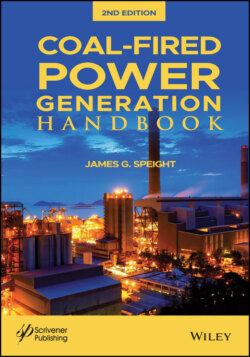Читать книгу Coal-Fired Power Generation Handbook - James Speight G., James G. Speight - Страница 85
3.8.5 Ocean
ОглавлениеOcean transport of coal requires a system of (i) transportation from the mine to the port, (ii) coal-handling facilities at the export port, (iii) ocean carrier networks with adequate number and size of ships, contractual obligations, management of the fleet, and route decisions, (iv) coal-handling facilities at the importing port, and (v) transportation from the port to the customer.
Ships are commonly used for international transportation, in sizes ranging from (i) handy size vessel, which is approximately 40,000 to 45,000 dead weight tons, DWT, a term normally taken to mean a vessel of approximately 10,000 to 40,000 DWT, (ii) a panamax-size vessel, which is approximately 60,000 to 80,000 DWT; technically, the maximum size vessel that can pass through the Panama Canal is restricted to a 105-foot beam, and (iii) a cape-size vessel which is capable of carrying >80,000 DWT; this is a vessel that is too large to transit the Panama Canal and thus has to sail via Cape of Good Hope from Pacific to Atlantic, and vice versa.
However, the ability of coal to variously self-heat (spontaneous ignition), emit flammable gases, corrode, and deplete oxygen levels has made the ocean transport of this commodity a particularly hazardous exercise. This is particularly the case in situations where loading is staggered or delayed and the potentially disastrous consequences of a shipboard coal fire can be realized.
